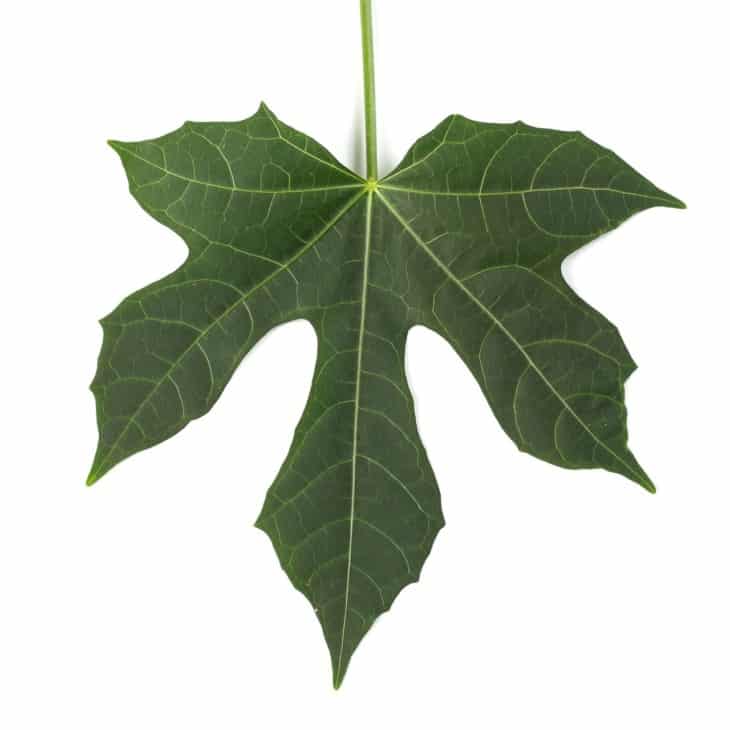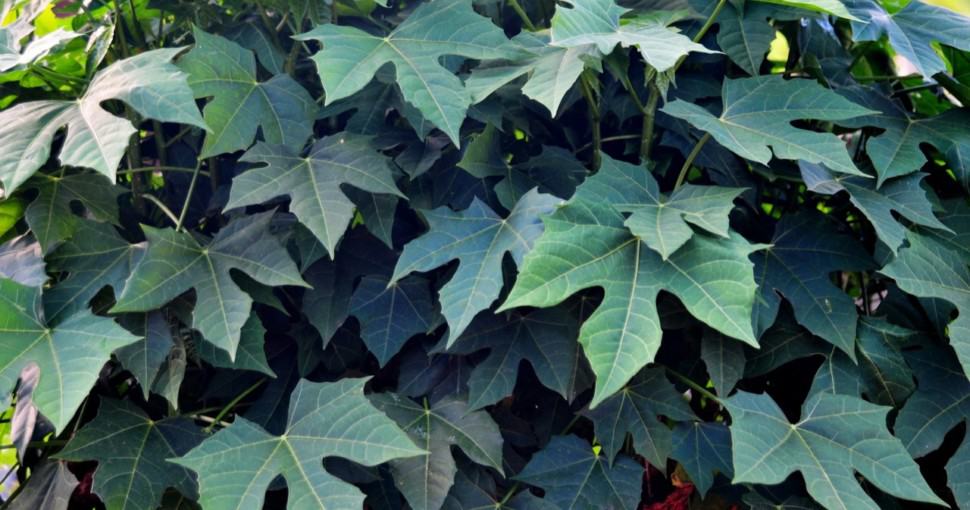Chaya is a high octane leafy green. We know it’s essential to give our bodies the best nutrition nature can provide in these current times. Known as the “spinach tree,” 1 oz of the Mexican plant offers up a day’s worth of vitamin C. But that’s not its only benefit.
Contents
Chaya has long been used in natural medicine in South American countries. The plant originated in Central America, primarily in Mexico. Known as “God Gift,” people have used it to try to treat nearly 100 diseases. Chaya has also proven to be valuable in the garden and with chickens.
Chaya’s popularity has spread over the globe, becoming an essential crop in places such as Cambodia and Nigeria. The leaves are used to make tea or added to soup, curry, stir-fry, and other dishes.
15 Nutritional Benefits of Chaya
Chaya (Cnidoscolus chayamansa or C. aconitifolius) has a higher nutritional value than other incredible greens such as amaranth and Chinese cabbage. This has made it a vital plant for people living in poor growing conditions, as aside from frost, the plant thrives in a wide range of climates and soils.
Nutritional benefits of Chaya include:
- Calcium
- Iron
- Magnesium
- Copper
- Lutein
- Protein
- Vitamin A
- Vitamin C
- B-carotene
- 7 Amino Acids
- Alkaloids
- Flavonoids
- High In Antioxidants
- High In Fiber
- Tannins

20 Medicinal Benefits Of Chaya
Chaya has long been used as a traditional remedy in Central America, and its use is spreading. It can be purchased as pills, powders, dried, and in other supplement forms. It is sometimes also sold as a topical skin cream.
Scientific research into the plant still has a long way to go, but progress is being gained. With the information at hand, the plant is believed to have antioxidant, hypoglycemic, analgesic, and anti-inflammatory properties.
Thus, it has been used to:
- Alleviates Arthritis
- Asthma Relief
- Aid Digestion
- Aid Memory And Brain Function
- Aid Weight Management
- Boost To The Immune System
- Boost To Vision Health
- Cough & Sore Throat Treatment
- Helps Regulate Blood Sugar In Managing Diabetes
- Helps Lower Blood Pressure
- Reduces Risk of Anemia
- Reduces Risk Of Hemorrhoids And Aid In Treatment
- Reduces Risk Of Heart Disease
- Reduces Risk Of Osteoporosis
- Reduces Risk Of Stroke
- Reduces Risk of Varicose Veins
- Reduces Headaches
- Treating Blisters
- Treating Fever
- Treating Scratches
6 Additional Benefits Of Chaya
Chaya is being used in gardening, farms, and proving beneficial to chickens. Not all of it involves using it as a food source, either.
Chaya As A Fertilizer
Gardeners also use chaya to make compost for their gardens. Once the branches of broken down, it creates a nutrient-rich soil that can be used as a fertilizer, greatly benefiting the growth of other plants.
Chaya As A Chicken Supplement
Chickens fed chaya have been said to maintain a better weight and provide a higher nutritional valance. This has led to increased egg production.
Chaya As A Fish Supplement
The entire chaya plant can be dried and ground up to use as a supplement food for some fish.
Chaya As A Living Fence
Chaya grows into a bushy tree that, when planted close together, can be used to create a living fence. These make eye-catching borders for properties and gardens. They are also helpful in keeping some types of farm animals in their pasture.
If you want to create your own living fence, seedlings should be spaced 23.5 inches (60 cm) apart. Wait at least three months before plucking some leaves. Depending on the soil, climate, and chaya variety, the plants will grow 3-12 feet (.9 – 3.6 m).
Chaya As A Shade Source
Chaya is being found to be useful in agro-forestry products. The plant is used to shade other cash crops such as coffee trees.
Chaya As A Teaching Tool
Chaya is an excellent food to use at centers where they teach the benefits of a healthy diet. Leaves can be provided to families to try or provided with cuttings so the families can grow their own nutritional food source.
Chaya Harvesting Tips
Chaya is a perineal plant, so it can continue to provide food for quite some time with the proper harvesting technique.
- Only remove 1/3 of the plant’s leaves so it can continue to thrive.
- Wear gloves when harvesting stinging varieties
- Small to medium leaves are best.
- Prune periodically to maintain plant health
Chaya Cooking Tips
While there are those that claim to eat chaya raw with no adverse effects, this is not recommended. Cooking takes little time and will ensure the vegetable is perfectly safe to consume. It can be placed in the fridge after cooking if you wish to use it cold.
The raw leaves contain the toxic substance hydrocyanic glucoside, which is also found in food such as cassava, lima beans, and other vegetables.
Cooking the plants releases the toxin and from the leaves, turning it into a harmless gas. Thus, once cooked, the vegetable is completely safe to eat.
Drying the leaves is also believed to reduce the hydrocyanic glucoside levels from the plant. Blending has also been tried and seems to have success so long as it has been done over a few hour span.
- Wash before preparation
- Young leaves must be boiled or fried for 5 min
- Older leaves require 10 – 20 minutes of cooking
- Vitamin C leaches into the boiling water, thus drink the broth as a tea or use in soup
- If using chaya powder, you can add it to smoothies and other dishes without cooking
Chaya Tea
Making the base for chaya tea is simple.
- Collect 4-6 fresh leaves
- Bring 2-2.5 cups of water to a boil.
- Remove pot from the heat source and add leaves
- Leave the leaves in the pot for at least 10 minutes
You can substitute 2 heaped tablespoons of dried chaya leaves.
Other delicious additives to the tea include:
- Lemon
- Honey
- Grated Ginger
- Mint
You can place the tea into the fridge in warm weather and later add ice to create a refreshing summer drink.







